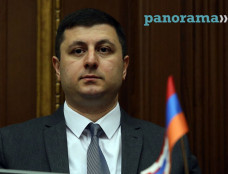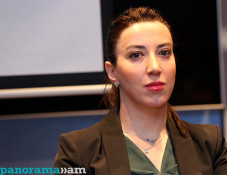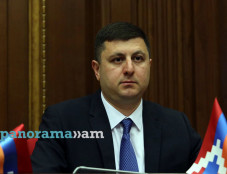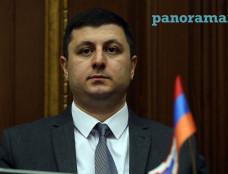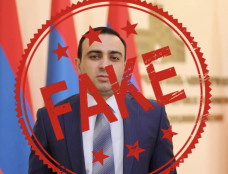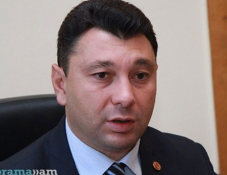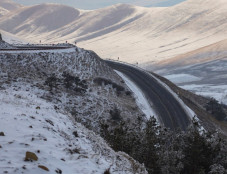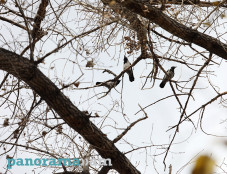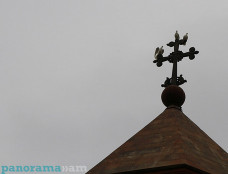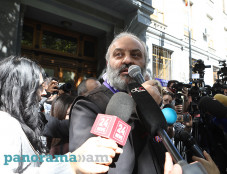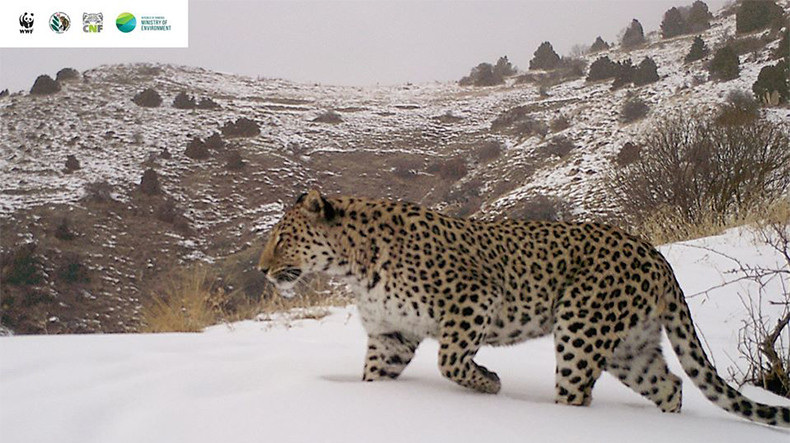
It is one thing to capture a leopard on camera, another thing is to provide them protection from being harmed – Head of WWF Armenia
Days ago, camera traps of WWF Armenia (World Wide Fund) captured a leopard in Yenokavan village of Tavush region, the organization reported on its website. Earlier, in 2019, news spread that a villager was attacked by a leopard in Yenokavan. A laboratory examination of the animal's hair, taken as a sample from the clothes of a villager injured in the attack, confirmed with 99% accuracy that the animal was a lynx, not a leopard.
Following the incident, the specialists of WWF Armenia initiated a field research. As a result, the geography of camera placement was expanded. The cameras captured photos and videos of the leopard in Yenokavan village in January of the ongoing year, yet the specialists were able to reach the scene and extract the photos only days ago.
“It was impossible to reach the area earlier due to the situation with coronavirus. The injured villager continues insisting that he had been attacked by a leopard and we initiated the research. We are 90 percent certain the leopard captured by the camera is a male,” the Head of WWF Armenia Karen Manvelyan told Panorama.am. Manvelyan confirmed that the evidence of leopard occurrence in the area has been shared with Russian partners of the organization as well.
“I recall the incident of the villager who had been attacked by the leopard. I was sure he had killed the animal. I am now happy to reveal I have been mistaken and thank God, the leopard is alive. This is another male leopard that would travel in the areas of Small and Greater Caucasus until caught and used “as carpet”,” Viktor Lukarevsky, leading researcher at Russian State Reserve, Candidate of Biological Science told Panorama.am, commenting on the latest images of the leopard captured in Tavush. Lukarevsky has been involved in the research of Caucasian leopards in the territory of Armenia since the 90s.
“In late 90s and early 2000s, me and Hrach Ghazaryan started the initiative to track and document all available information about leopards in Armenia. In 2001, the situation was quite similar to these days, we lacked only camera traps. We were examining all the areas nearby the Khosrov Forest reserve. We eventually found reliable signs of leopard presence in south of Armenia. We also found two leopard furs one of the animals believed to had been killed in 1995, the other - in 1998. Traces of leopard were spotted also in 2002-2003 in Meghri mountains,” the Russian specialist said, pointing to the issue of reproduction as the animals are not able to mate or spread to other habitats being killed.
Speaking of the situation with the preservation of leopards in Armenia, Manvelyan said: “Over the past five years no leopard hunting case has been registered in Armenia. Habitat protection measures are in place, and we are working with the ministry of environment to strengthen those measures in Yenokavan area. Our partners and forestry workers will start works aimed at protection of the area. One thing is to capture an animal, the other is to provide protection from being harmed.”
In his words, the villager, who had suffered from the attack, has also been involved in the research aimed at preservation of leopards. He is set to work with an international organization.
To note, the Armenian highland is a habitat of the endangered species of the Persian or the Caucasian Leopard. According to some sources, the Caucasian Leopard had been quite commonly spread over Armenia in the 1970-80-s. However, over years, hunting this animal had become so extensive that the Leopard was registered in the Red Data Book of the Armenian SSR in 1987. Presently, the Caucasian Leopard, is included in the Red Data Book of Armenia (2010) and on the IUCN Red List with the status of the «critically endangered» and «endangered» species, respectively. In Armenia, the number of these animals ranges up to 10 individuals.
Newsfeed
Videos






